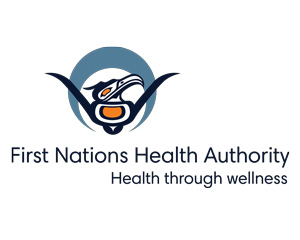By Gina Gaspard RN, MN, GNC (c) and Cindy Preston, BSc (Pharm), RPh
Did you know?
One of the most important and yet often overlooked barriers to wellness is over use of medications. There is a tipping point where multiple medications can actually make you sicker. The long word used to describe this phenomenon is polypharmacy.
How much is too much?
The short answer is - it depends. Generally the likelihood of experiencing adverse effects increases with the number of medications. There is no correct number of medications to take because each one is likely to have a bit of a side effect. If we add all the pills' side effects together, they can make you feel unwell.
Our First Nations Health Benefits data shows that there are currently approximately 6,000 people receiving more than 20 different medications in 2015. Of those people receiving multiple medications, the majority were in the age range of forty to sixty years old. This is an additional concern because for First Nations people, polypharmacy has spread from the frail older adults into a younger age group.

In 2015, only 40, 470 (about one quarter) people did not receive drug coverage through Health Benefits.
How can I tell if I'm taking too many meds?
It's not always easy to know if a medication is helping or putting your health at risk. The side effects of each medication need to be balanced with its benefits. If a medication is not working for the intended symptoms, there is no point in continuing to take it.
Health care professionals now have some really great tools to assess how much is too much. It's really important not to stop medications without talking first to your health care professional. If you worry you are being overprescribed by your doctor you are free to seek a second opinion. Talk to your pharmacist and/or nurse.
What can our community do?
We know polypharmacy is a concern in many First Nation communities for multiple reasons. Perhaps the most common barrier to appropriate medication management is lack of regular access to a health care team (prescriber, pharmacist and nurse).
To reduce the risks that come with multiple medications requires a person-centred review of the necessity, potential benefits and potential risks of each medication plus the potential interactions between the medications. A meaningful medication review is completed by a clinical team which includes (at least) the client, nurse, pharmacist and prescriber. The team is in a partnership which honours respect and collaboration. The doing with partnership also requires a specialized body of knowledge to consider normal changes of aging, indicators of frailty and individualized goals of care to inform an individualized care plan.
The expected benefits (supported by the literature) besides increased individual and community wellness, include a reduction in unscheduled emergency room visits and hospital stays, decreased medication-related adverse effects and fewer falls and injuries for Elders.
How can we get started? For more information on how your community can reduce polypharmacy risk, contact gina.gaspard@fnha.ca
Let's talk!
Gina Gaspard RN, MN, GNC ( c )

Gina was born and raised in the East Kootenays. She has been a nurse for over thirty years and recently joined with First Nations Health Authority as chronic disease healthy living clincial nurse specialist. Her interest is promoting healthy living and helping others to learn to live well with chronic disease. As a result, she has a special interest in polypharmacy risk reduction. Gina and her husband enjoy their three adult children and gardening.
Cindy Preston, BSc (Pharm), RPh

Cindy Preston is a pharmacist working with FNHA Health Benefits and Nursing Services on issues related to pharmacy services, regulatory issues, and practice standards. She is passionately working on FNHA's Healthy Medication Use initiative, an initiative that promotes safe use of appropriate drug therapies and supports community awareness of prescription drug abuse. She grew up in on Vancouver Island and now resides in the Lower Mainland with her husband and two young children.

FNHA What is Polypharmacy? poster (Click to download)

